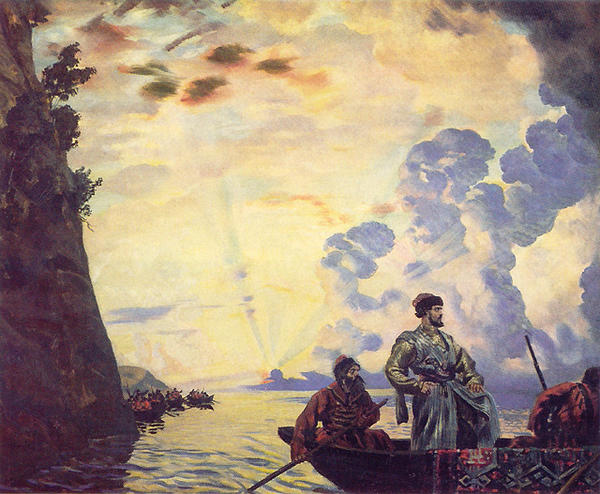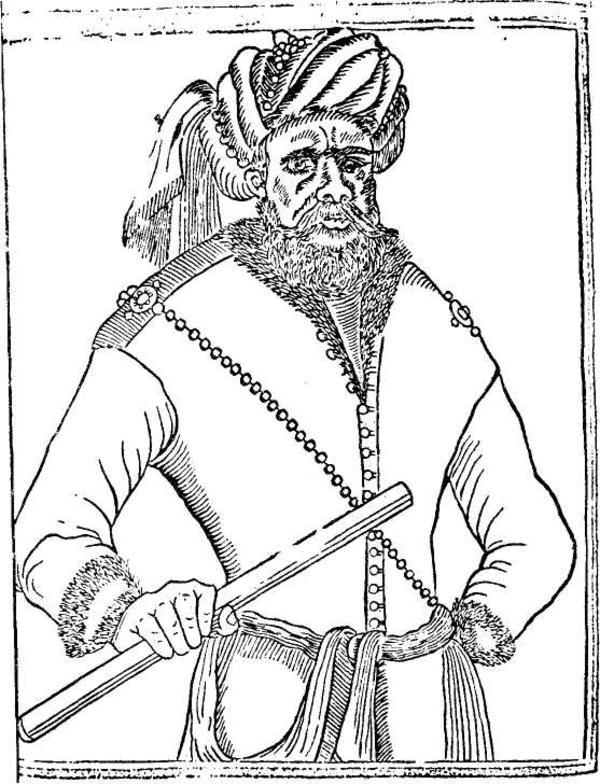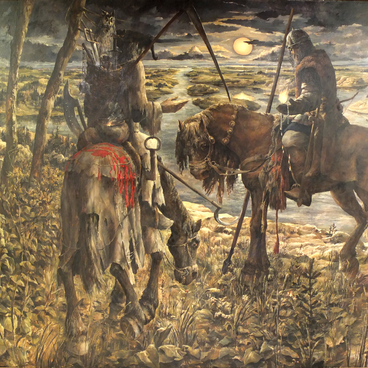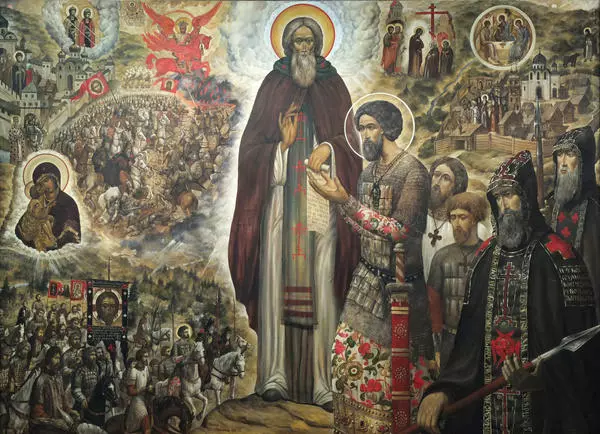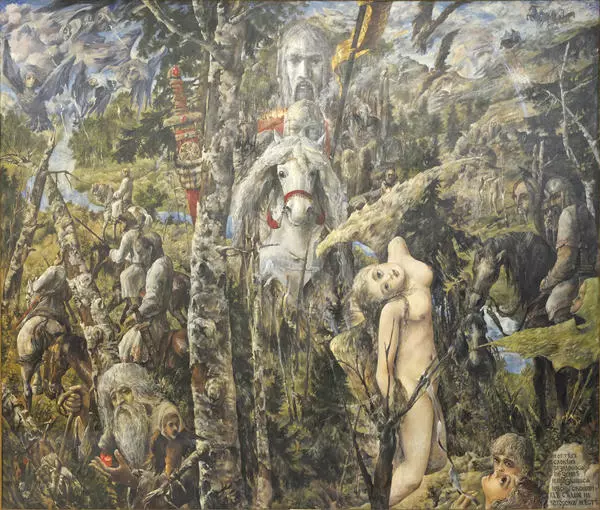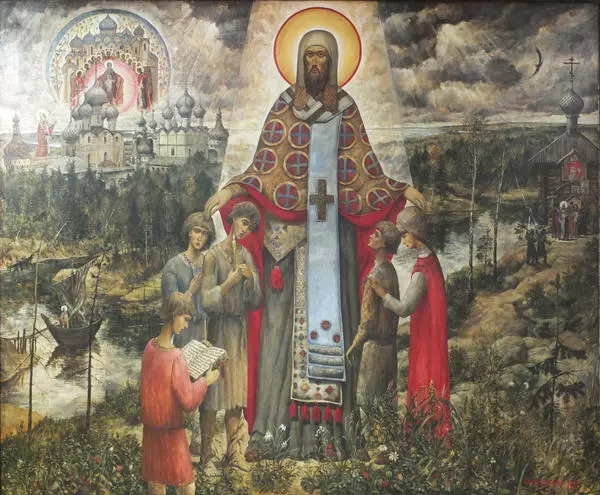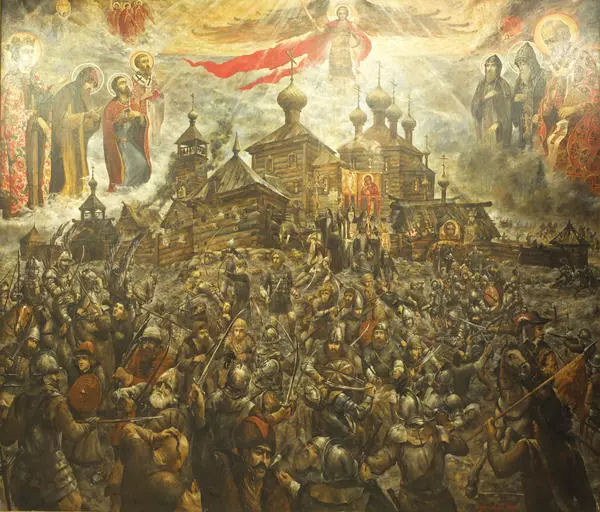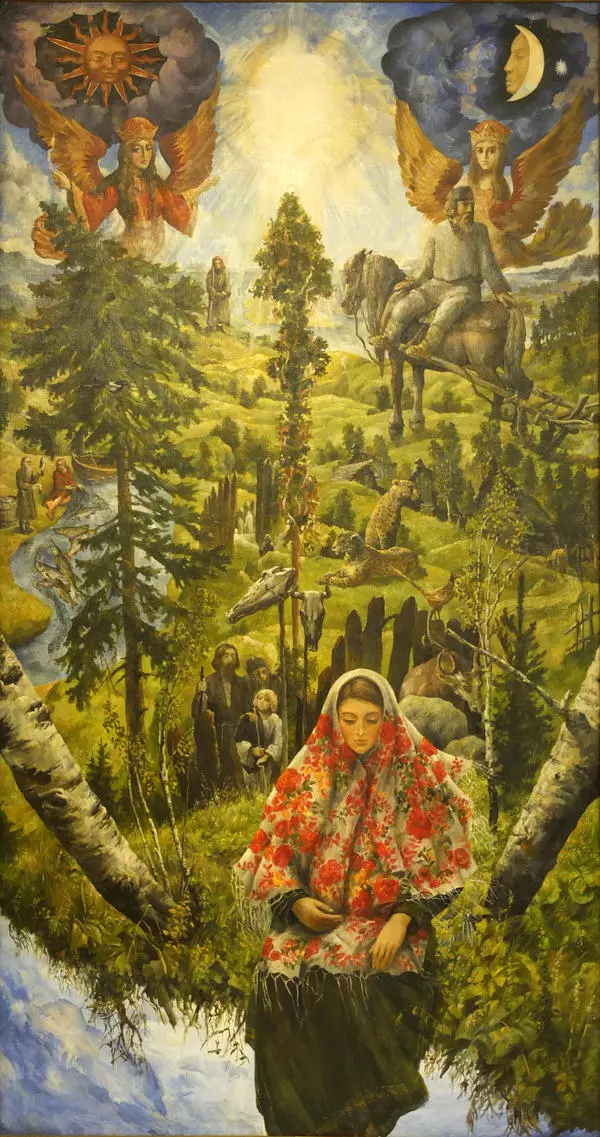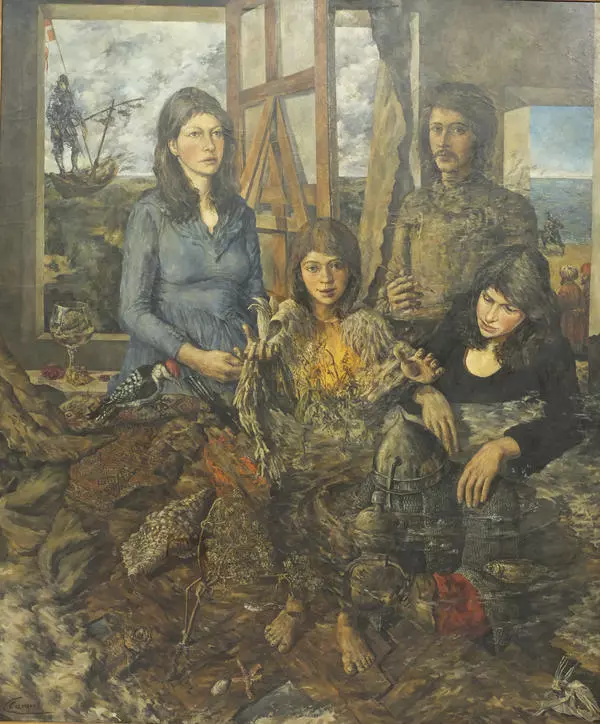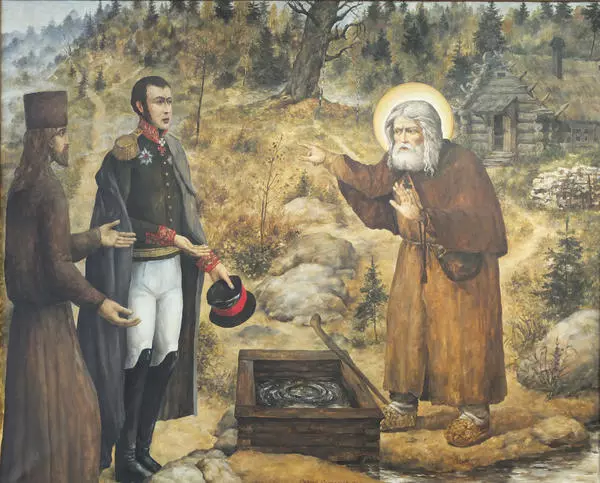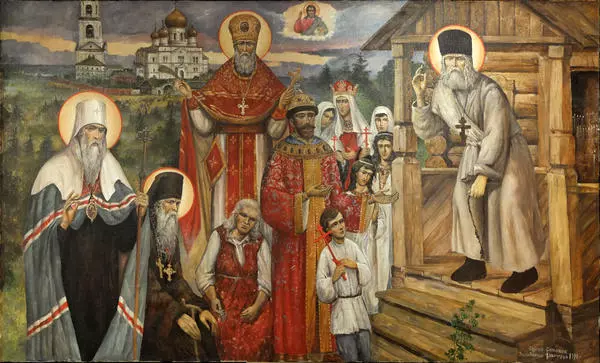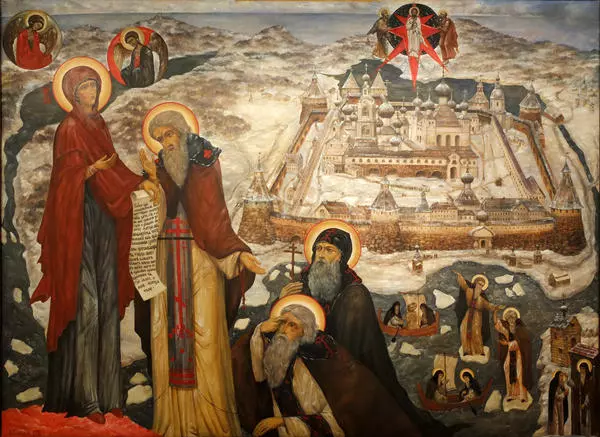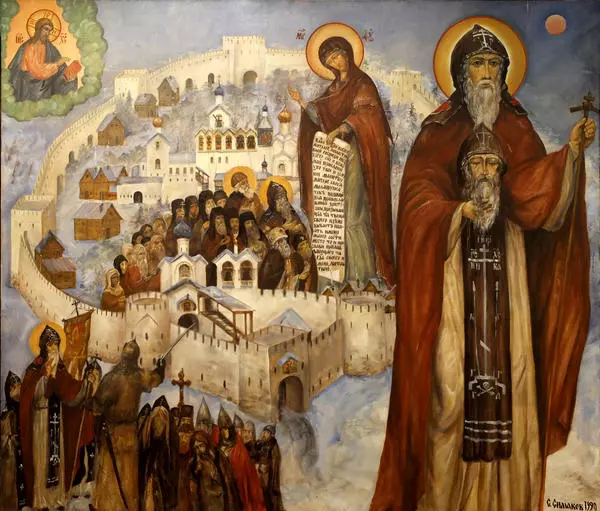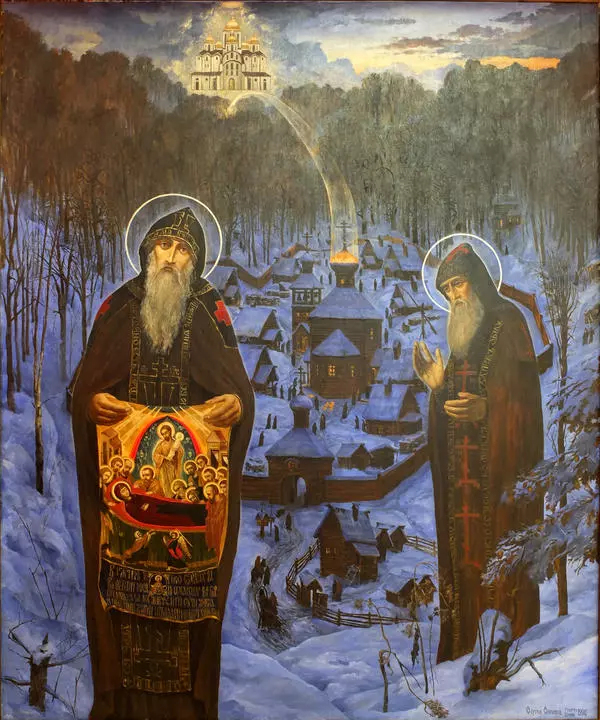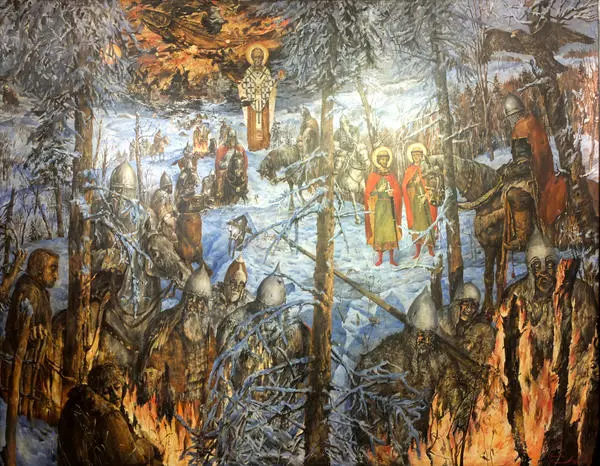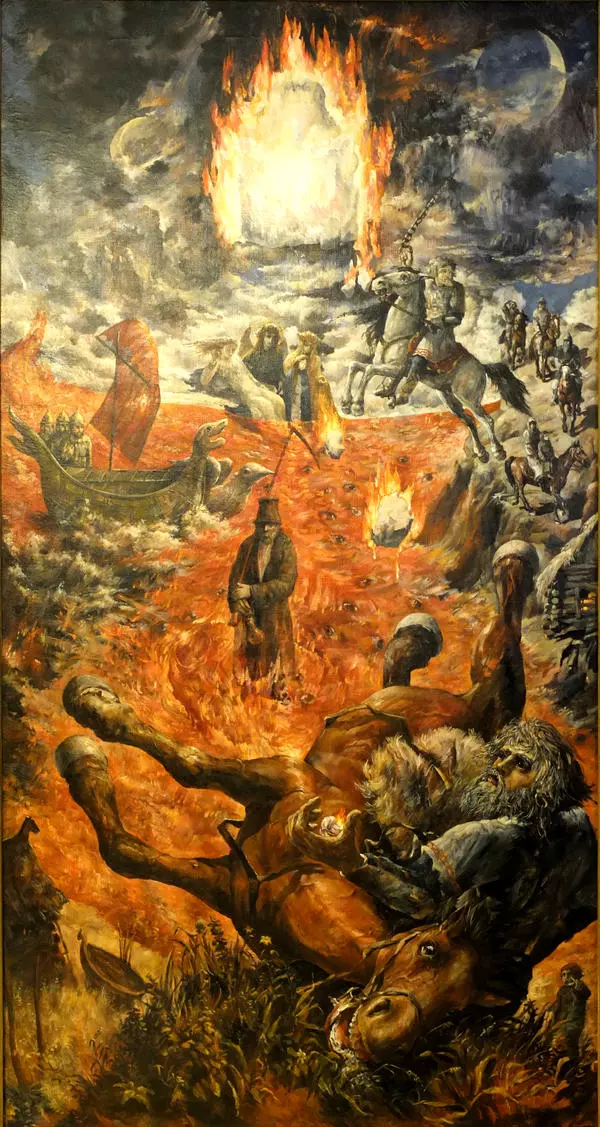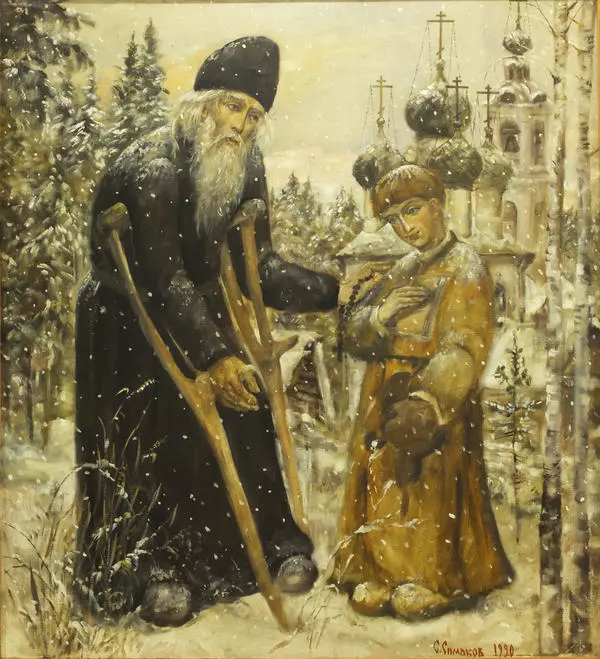Sergei Simakov first exhibited the painting Stepan Razin at the exhibition in Riga in 1989. At that time, the artist tried to finalize the pagan subjects that he often used in his earlier work. At the same time, Simakov continued to use surrealist methods. This was his way to convey the confusion and disorder of the ancient epoch and try to penetrate the dark abyss of the subconscious of the Russian history.
Stepan Razin was a cossack from the Don region. He led the largest peasant rebellion in the time preceding the reign of Peter the Great in 1670-1671. In the painting the rebel is in a pit, chained to wooden poles. His face is contorted with pain and anger: this is probably the scene before his execution in the Red Square. In stark contrast with the main character is the figure of Alexey Mikhailovich the Quiet — the second tsar of the Romanov dynasty. He is mounted on a horse above the turmoil, his facial expression is deliberately calm.
In Sergei Simakov’s interpretation the execution of Stepan Razin did not become the final point of the 17th century, known in the Russian history as the rebellion age. In the right corner soars the wingless and legless mythical bird Gamayun, according to the legend its appearance heralded the imminent death of the ruler. On the aces of the secondary characters fear and despair mix with cautious hope.
The contradictory historical figure of Razin attracted many Russian poets and writers — Alexander Pushkin, Marina Tsvetayeva, Velimir Khlebnikov, Evgeny Evtushenko and many others. His image is popular in the Russian pictorial art: on Vasily Surikov’s painting the dominative and even dictatorial Razin is sailing in a boat with his troops, while Boris Kustodiev depicted the rebel in a romanticized manner.
Stepan Razin was a cossack from the Don region. He led the largest peasant rebellion in the time preceding the reign of Peter the Great in 1670-1671. In the painting the rebel is in a pit, chained to wooden poles. His face is contorted with pain and anger: this is probably the scene before his execution in the Red Square. In stark contrast with the main character is the figure of Alexey Mikhailovich the Quiet — the second tsar of the Romanov dynasty. He is mounted on a horse above the turmoil, his facial expression is deliberately calm.
In Sergei Simakov’s interpretation the execution of Stepan Razin did not become the final point of the 17th century, known in the Russian history as the rebellion age. In the right corner soars the wingless and legless mythical bird Gamayun, according to the legend its appearance heralded the imminent death of the ruler. On the aces of the secondary characters fear and despair mix with cautious hope.
The contradictory historical figure of Razin attracted many Russian poets and writers — Alexander Pushkin, Marina Tsvetayeva, Velimir Khlebnikov, Evgeny Evtushenko and many others. His image is popular in the Russian pictorial art: on Vasily Surikov’s painting the dominative and even dictatorial Razin is sailing in a boat with his troops, while Boris Kustodiev depicted the rebel in a romanticized manner.



